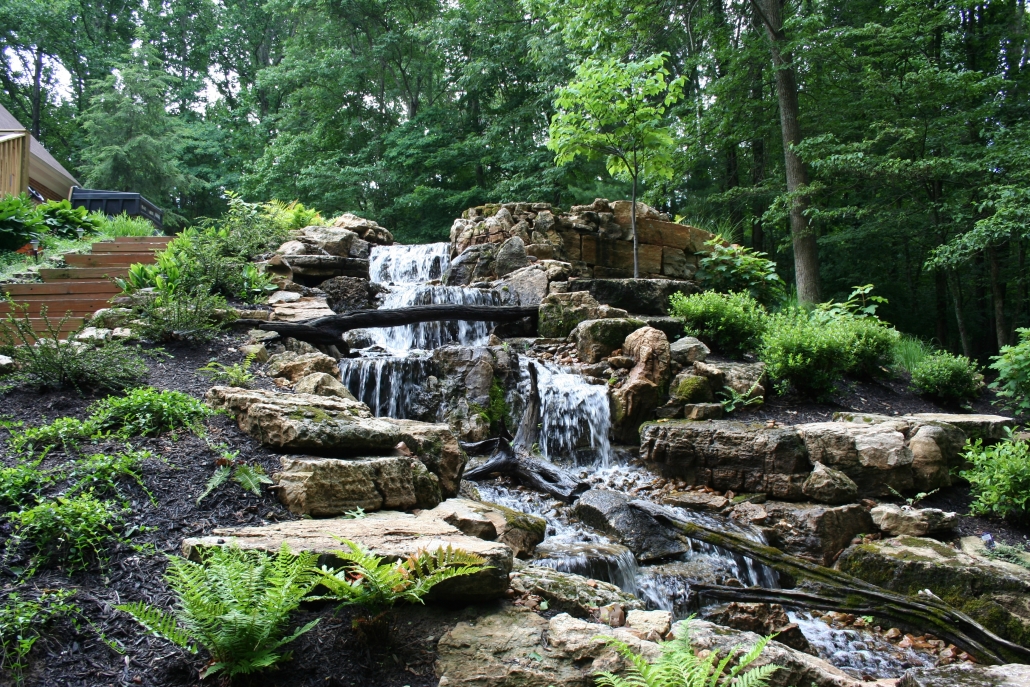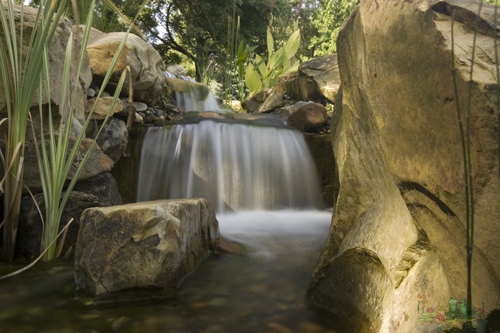All About Manmade Pondless Waterfalls
In this article about artificial waterfalls, you are shown how ponds themselves can be beautiful additions to homes and other properties, but they might not be practical due to concerns over safety or upkeep. In many cases it’s better to use an artificial waterfall instead of building around existing natural pools. While cascading water always looks lovely no matter what its source, having an attractive man-made feature is easier than creating one with nature alone.
A pondless waterfall is a type of water feature that can be installed without the use of a body of standing water. The lack of an associated pond reduces the initial and maintenance costs for this type of application, as well as reducing environmental impact. It is often used where it would not make sense to install an artificial pond (e.g., no reliable source of clean water) or in areas where building a permanent structure around a natural pond isn’t possible (e.g., due to size limits).
A typical installation includes plants and rocks added around the pump and filter system, with pre-made streambeds available from suppliers. Water is filtered by mechanical equipment and then sent through tubing away from the pump and into a natural-looking streambed where it can be further filtered by the plants.
Many types of pumps are used in pondless applications, with variable water flow patterns depending on the needs of the application. A single small pump can provide enough water to create a nice-looking creek-like feature if water only needs to flow a short distance. For applications that require more substantial flows over longer distances, multiple pumps can be used together in different locations or connected to one large pump that sends the water out through a larger diameter pipe.
Caution should be taken in choosing a location for the waterfall, as the facility must take into account both safety and consideration of existing landscaping. All water features require some level of maintenance to thrive, so it is important to consider this when planning where the pump will be installed. A shallow pond or bog design can cut down on maintenance by making it easier to access equipment without having to destroy any landscaping.
For the typical homeowner, pondless waterfalls might be a good way to add another element of interest and beauty to their property while also getting all the benefits that come with running water. It’s feasible for anyone who wants an attractive focal point without having to build or maintain a full-sized pond.
Waterfalls are formed when a river or stream flows over hard layers of rock that cause the water to drop in elevation rapidly. The forces of gravity are what allow these natural wonders to exist. Waterfalls are fascinating features because they are constantly changing due to both the force of water flowing over them and erosion caused by weathering along their course.
Erosion is one reason why people should consider installing artificial waterfalls instead of natural ones if they want to create an attractive focal point on their property without all the hassles associated with creating a pond. It’s also possible to have water flow through multiple elevated falls before it reaches its final destination, which can provide even more dramatic interest than just having a single waterfall.
Waterfalls have a special aesthetic power that also makes them incredibly useful as a focal point for landscaping, and it’s possible to install artificial versions either indoors or outside without all the hassles of trying to create a pond.
Thanks for reading at Meyer Aquascapes! We hope you’ve enjoyed our post on garden pond design. Please leave a comment below if you liked it or have any questions. We’d love to hear from you! Thanks for stopping by!




